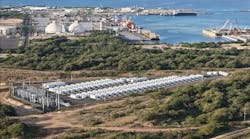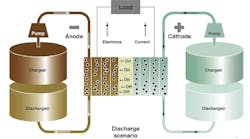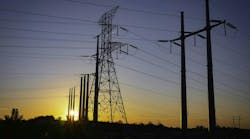Plus Power has begun operating its Kapolei Energy Storage facility on Oahu, Hawaii, an advanced grid-scale battery energy storage system, helping transition the state's electric power from coal and oil to solar and wind.
According to Brandon Keefe, Plus Power's executive chairman, it's the first time a battery has been used by a major utility to balance the grid: providing frequency response, synthetic inertia, and black start.
The KES battery project, located on eight acres of industrial land on the southwest side of Oahu near Honolulu, uses 158 Tesla Megapack 2 XL lithium iron phosphate batteries, each roughly the size of a shipping container. It offers the grid 185 megawatts of total power capacity and 565 megawatt-hours of electricity, acting as an electrical "shock absorber" often served by combustion-powered peaker plants — responding in the blink of an eye (250 milliseconds), rather than the several minutes it takes combustion plants to come online.
Customer-sited solar power has become so abundant that Hawaiian Electric must regularly 'curtail' or turn off large volumes of existing utility-scale solar and wind to keep the electric system in balance.
Hawaiian Electric's modeling found that in its first five years in operation, the KES battery plant will allow the utility to reduce curtailment of renewable energy by 69% and integrate 10% more new utility-scale renewables than previous models had allowed, while providing for the continued rapid growth of individually-owned renewables such as rooftop solar.
According to Hawaiian Electric, the project will save customers money. The Hawaiian Electric filing for KES estimated it will reduce electric bills by an average of $0.28 per month over a 20-year contract life.
The battery plant's specifications include:
- 135 MW / 540 MWH of capacity and energy
- 50 MW / 25 MWH of additional 'fast frequency response' to help keep the electric grid stable
- "Virtual inertia' to replicate the power-smoothing function of a spinning turbine
- 'Black start' capabilities, which will support grid recovery in the event of a blackout
The KES plant interconnects near three of Hawaiian Electric's critical power generation facilities, enabling KES to support the reboot of those power plants in the event of an island-wide emergency, otherwise known as 'black start' capability.
The KES batteries will help replace the grid capacity formerly provided by an AES coal power plant less than a mile away. That plant once produced up to one-fifth of the electricity on Oahu, home to nearly a million of Hawaii's 1.5 million people and Army, Navy, Air Force, and Marine Corps bases that require reliable power. The coal plant closed in September 2022.


